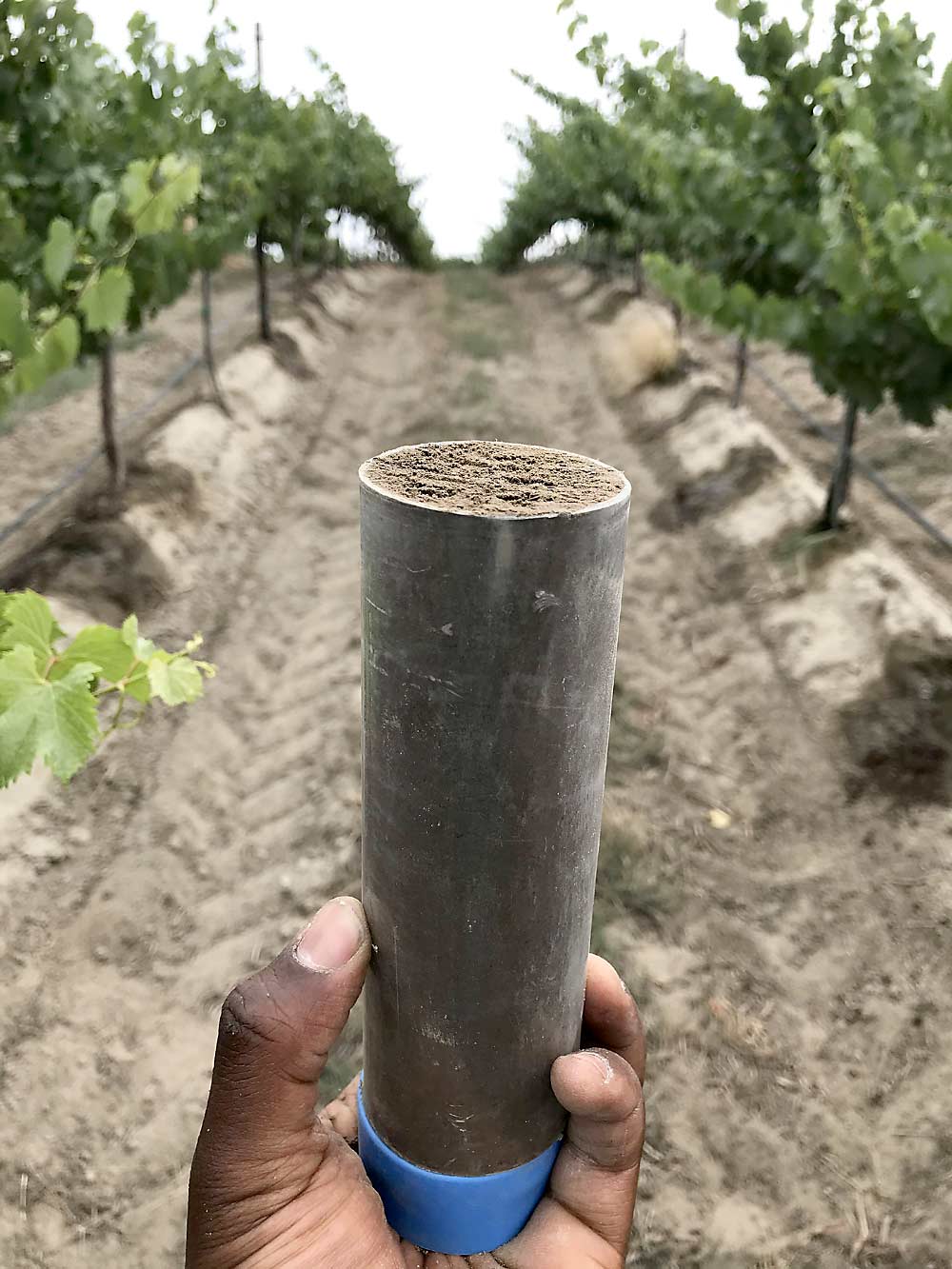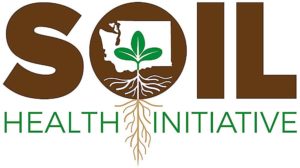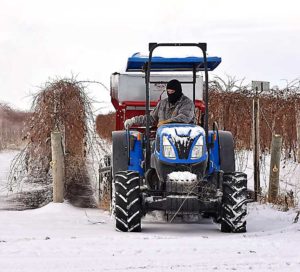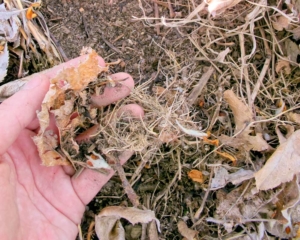
Deirdre Griffin LaHue wants to test your soil.
Specifically, the Washington State University soil science professor wants to sample soil from vineyards throughout the state, taking two composites from each — one from a spot with high production and one with poor production.

Exploring the differences between the two should help to determine why one spot grows well and another with similar soil does not. The information also will help her with the ambitious goal of defining soil health as it relates to Pacific Northwest vineyard management.
The research question: “What are the metrics that are most related to how well a vineyard does?” Griffin LaHue said.
Soil health is an underdefined term in the grape industries, said the researcher, who is based at WSU’s Mount Vernon research and extension center. In popular imagination, healthy soil looks dark and loamy, usually sprouting a green basil shoot while being held by a pair of muddy but well-manicured hands. Meanwhile, most of the more scientific definitions were developed to apply to grain production in the Midwest and Eastern United States, and they favor yield maximization as the goal.
In wine grapes, simply producing a high yield per acre is not what growers want. During a December soil health viticulture webinar, Griffin LaHue surveyed participants about their top goals for soil health. Pest suppression was a top priority.
Griffin LaHue is beginning her second year of sampling to understand how to measure soil health in the ways that benefit wine grape growers, as well as hops and tree fruit growers. The project is funded at $500,000 through a Washington State Department of Agriculture Specialty Crop Block Grant.
Through her work, she aims to publish soil health curves that measure water-holding capacity, organic matter, biological activity and a host of other characteristics, then determine which ones mean the most for viticulture.
“Is there a suite of measurements that is most related to the … health of that vineyard?” she asked.
Participating growers will receive reports that compare their two sample blocks to each other and to the overall state, Griffin LaHue said.
Soil health in Washington is a big topic these days.
Since 2016, Tianna DuPont, a WSU tree fruit extension specialist in Wenatchee, has been looking for similar clues about how different soil characteristics affect fruit production, and for Good Fruit Grower she has written about her results with soil biology populations of plant-feeding pathogens, beneficial microarthropods and nematodes both good and bad.
Griffin LaHue is working with DuPont, she said. They intentionally designed her methodology to match DuPont’s, collecting samples from different sites to create an even bigger data set. “We’re actually trying to do the same thing that she did … so that we can pool all our data together,” Griffin LaHue said. Unlike DuPont’s research, Griffin LaHue’s project also covers five other crops — hops, potatoes, onions, sweet corn and pulses — in addition to wine grapes.
Meanwhile, Griffin LaHue’s project is related to —but not a part of — a larger effort in Washington to inventory the state’s soil health, called the Washington Soil Health Initiative. In 2020, the state Legislature approved the initiative to create a long-term plan for soil health research and management, but it was never fully funded.
Political candidates across the country made public appearances discussing soil with farmers last year, said Leslie Michel of WSDA, one of Griffin LaHue’s research partners.
“We’re seeing it as a focus not just for farmers and agencies but also for the general public,” she said.
Agriculture overall does not lack in ways to measure soil, with numerous tests and laboratories available across the country. Griffin LaHue and Michel aim to analyze soil health indicators such as available carbon and nitrogen, pH and soil-water relations and, they hope, narrow down the tests that mean the most to wine grape growers in Washington.
Even after millennia of farming, researchers still know relatively little about soil, a complex ecosystem with numerous overlapping factors that make the topic difficult to study, Michel said. But it’s so fundamental — for everything from drought tolerance to nutrients and production to the overall environment.
“With so many of those ecological questions, so much of it comes down to the soil,” Michel said. •
—by Ross Courtney









Leave A Comment